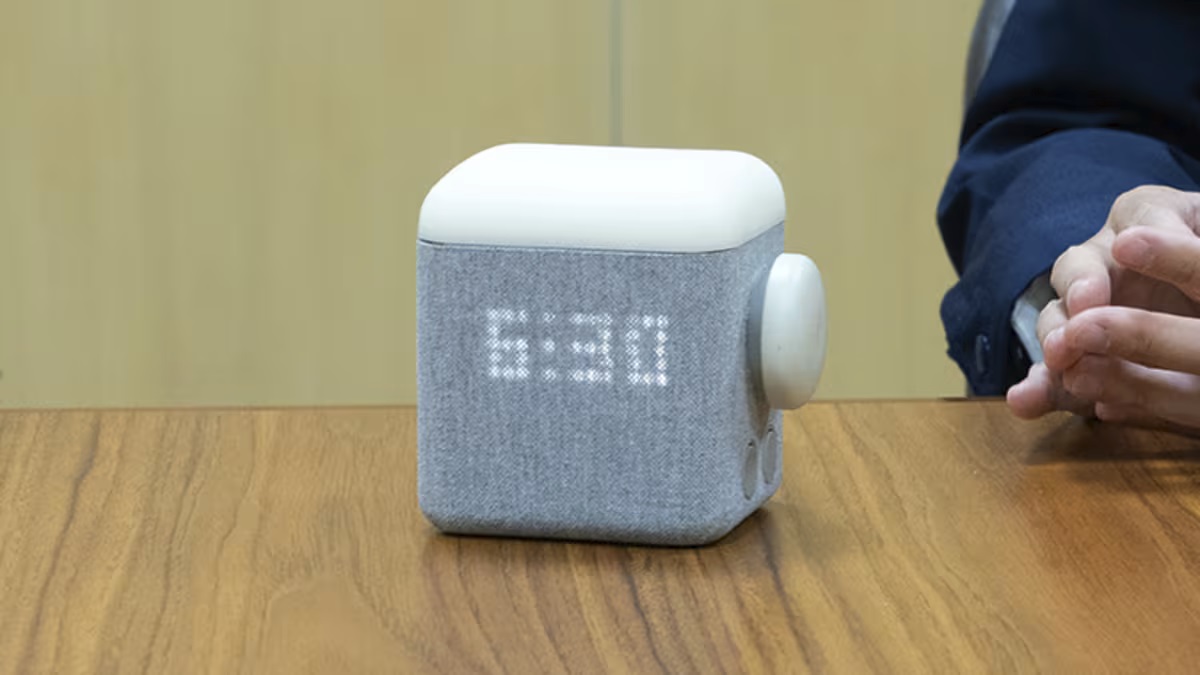
Today's announcement for Nintendo Sound Clock: Alarmo came a little out of left field, but in a new interview today, we heard about how the whole thing came together.
A discussion was posted on Nintendo's website featuring producer Yosuke Tamori and director Tetsuya Akama. Tamori revealed that the project began with research into motion sensing technology. However, creating an alarm clock wasn't the first step, Tamori said Nintendo was looking to “support people while they sleep, and we were looking for a way to make that happen.”
Tamori and Akama shared the following:
Tamori: One of our internal projects was researching motion sensor technology. Since this sensor maintains privacy since it does not use a camera, we had an idea about how it could be very suitable for use in the bedroom, so we decided to start a new project to see what we could do with it.
I see you started development from scratch while also taking advantage of already existing ideas. You mentioned that a motion sensor could be suitable for use in a bedroom, but was it clear from the beginning that you were going to make an alarm clock?
Tamori: Actually… not quite. We knew it was about supporting people while they sleep, and we were looking for a way to make that happen. However, after a lot of technical trial and error and building several prototypes, we decided to focus on alarms.
So, you used the team's existing knowledge, but there was a certain moment that finally made you settle on the alarm. Is this correct?
Tamori: Well… The motion sensor used in this device detects the sleeper's movements, and there are certain body movements that he makes just before waking up. From an early stage, we thought that if we could get this sensor to detect the timing of these movements, people could use it to help themselves wake up feeling refreshed. But it was technologically very difficult for the sensor to detect those movements accurately enough at the time, so we continued the experiment for a while.
Then, our programmers found a way to use the sensor effectively, and there was a point where its responsiveness improved dramatically. They have developed a system that roughly detects where a person is on the bed based on the distance and angle measured by the sensor. This made it possible for the sensor to more accurately capture the moment a person gets into or out of bed. At this time we began discussing the possibility of developing an alarm clock that would automatically stop as soon as a person got out of bed.
Akama: Since the early days of the project, we've thought about implementing a feature to wake yourself up, such as an alarm that goes off about 10 seconds after you get out of bed or when you move your body. Although all of these features were useful, we weren't sure if they would be fun or satisfying, unfortunately. At that time, there were no toy characters appearing on screen. The time remaining until the alarm went off was simply displayed on a bar on the screen, so you had to look at the screen to see how much time was left. Also, it may take some time for the alarm to go off even after getting out of bed. So, there were many challenges.
Then, as programmers made technical improvements, like the improved sensor resolution mentioned earlier, we started coming up with more and more ideas to make it fun and responsive. These included sound effects that get louder when you move your body, or a noise that plays the moment you get out of bed. It was around this time that we finally started to feel that we could create a new product in the form of an alarm clock.
Akama also said that the team tried many ideas, prototypes, and trial and error. These included “detecting arm movements, dividing the bed area into left and right to detect the direction in which you are rolling, and making the alarm disableable by stretching”. One of the big goals was around not having to touch the device.
We also learned during the interview that the development took place during the coronavirus pandemic, so it's been in the works for a few years now.
Finally, you can check out one of the prototypes below. At that time, it used a dot matrix LED display instead of an LCD display. Ultimately, the prototype wasn't suitable because “such a display system would not be able to adequately communicate instructions” and “it was particularly difficult to explain new features of the product, such as the motion sensor,” Tamori said.

We have information about Nintendo Sound Clock: Alarmo here. You can also read the full interview here.
Share this:
Related to